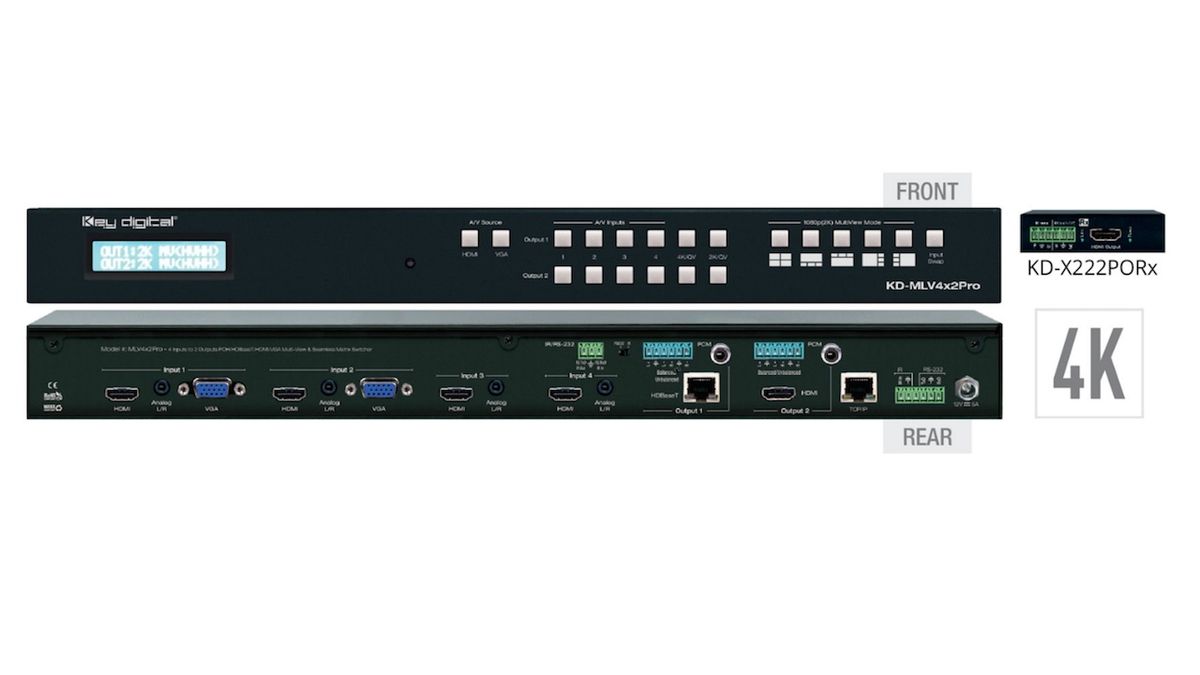The What: At ISE 2020, Key Digital showcased its latest multi-view presentation matrix switcher, the KD-MLV4x2Pro. The four-input, two-output video matrix features multi-view processing and UHD/4K resolution up-scaling with audio de-embed.
[Key Digital Launches KD-Pro8x8D All-in-One Solution]
The What Else: The KD-MLV4x2Pro gives video wall functionality to any professional or consumer large panel or screen. In full-screen mode, the screen will display any of the six (four HDMI and two VGA) video sources; in quadrant mode, four video sources are viewed in equally sized quadrants; and in multi-view mode, the processor creates and stores custom multi-view layouts with the option to choose a primary video source on the top, bottom, left, or right of the screen while still viewing the additional three sources in smaller windows.
KD-MLV4x2Pro offers maximized processing capabilities to allow fine content like text tickers and spreadsheets to be viewed clearly. Integrators can create custom screen layouts by stacking images with customizable priority settings with image layering.
The KD-MLV4x2PRO matrix supports SD, HD, and VESA input resolutions up to 1080p / 1920x1200 on four HDMI and two analog video inputs; analog video input ports support VGA / DB15 or component / YPbPr signal types; and outputs independently upscale to 4096x2160 30Hz [4:4:4] 8-bit in Ultra HD/4K in 4K Quadrant mode. The second-generation updates include HDBaseT, HDCP2.2, and surround audio.
A wide array of control options includes IR, RS-232, TCP/IP via open API, and web control interface, which reduces installation time and provides basic and advanced video and audio setup. The KD-MLV4x2Pro is Key Digital app ready, Key Digital Management Software Pro (KDMS Pro) ready, and Compass Control Pro ready.
The Bottom Line: In addition to multi-view picture-in-picture functionality, KD-MLV4x2Pro is also a seamless switcher with uninterrupted screen transitions during source selections, making it well suited for integration with projectors where switching typically results in long blue screens.











